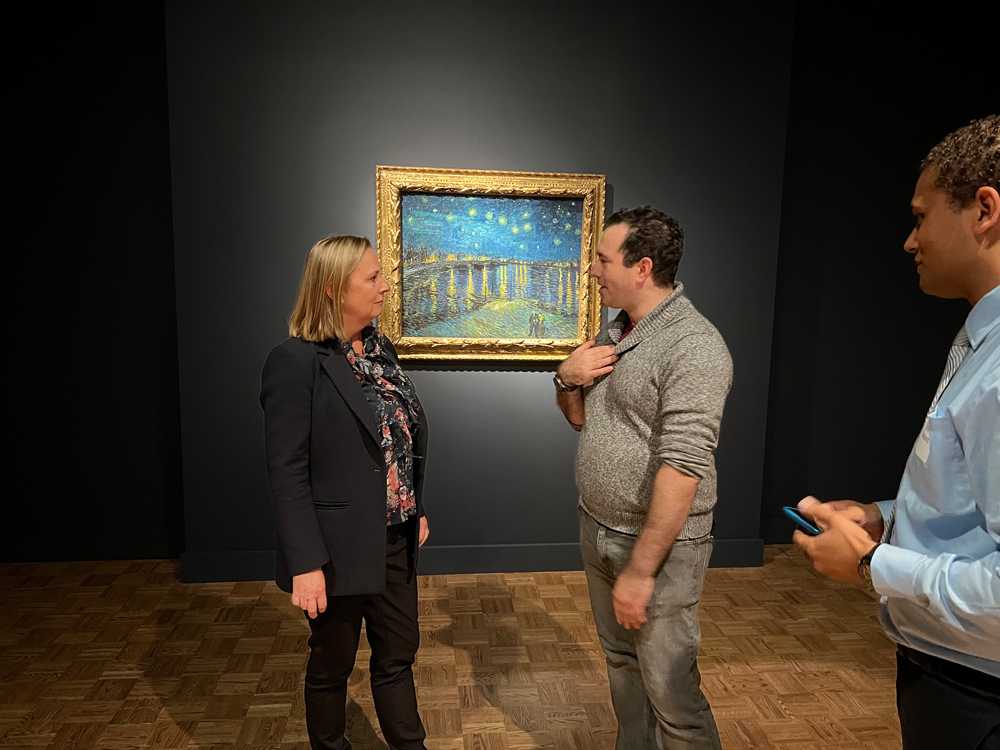Looking at a portrait titled βThe Postman,β Josien van Gogh talked about her great-uncleβs time in Ireland, when the locals wanted him out of town and a disagreement with artist Paul Gaugin led to van Gogh famously cutting off his own ear.
βThe Postmanβ offers a slightly different view of the troubled painter during his troubled time.
βHe was his friend,β van Gogh said, βand he didnβt have so many friends, Vincent,β.
She was on hand Sept. 29 to reveal the DIAβs latest exhibit, βVan Gogh in America,β a collection of 74 paintings by Vincent van Gogh commemorating the 100th anniversary of when the DIA was the first American museum to acquire a van Gogh.

Van Gogh, who can speak at length about the paintings in the exhibit, brought a unique perspective to anyone lucky enough to talk with her in the gallery. Her stories behind the paintings werenβt just art history. They were family history.
βA version of that painting hung in my house,β she said, walking by a painting titled βThe Bedroom.β Another, she said, perfectly captures the south of France, where Vincent van Gogh spent time in an asylum for mental health issues.
The original idea for the exhibit, was not to celebrate the 100th anniversary of acquiring that first van Gogh, a self-portrait. The plan was to hold the exhibit in the summer of 2020, which the COVID-19 pandemic delayed. Holding it in 2022 on the centennial of that first acquisition, was a βsilver lining,β Jill Shaw, curator of the exhibit, said.

Shaw said in 1922, most Americans werenβt ready for van Goghβs work and that the DIA took a bold step by buying one of his paintings, even if it was more than 30 years after his death.
Figuring out why America was so slow to take to van Gogh, Shaw said, was her driving question in putting the gallery together.
βAmericans in the early 1900s, they were getting on board with Monet,β she said. βWe really liked realistic paintings. We liked paintings that told stories and what rural life looked like, and just more conventional landscapes. This [van Gogh] was very different, very different.β

Shaw pointed to the βbrevity of the strokesβ and βvibrant colorsβ that define so much of the Dutch masterβs work.
There was also that whole cutting off his ear business.
βThose stories very early on were very sensationalized: βItβs the work of a madman!β which is not true,β Shaw said. βHe had his mental health crises for sure, but there was a lot bound up in his introduction to the United States,β Shaw said.
The exhibit opens Oct. 2 and will run until Jan. 22.
|
| Μύ |
|








